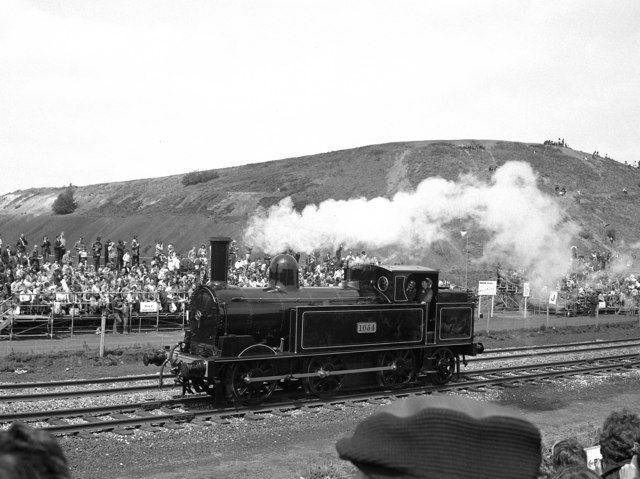UIC class C1 Turkish class 34 Russian class 0-3-1 | French class 031 Swiss class 3/4 First use 1880 | |
 | ||
Under the Whyte notation for the classification of steam locomotives, 0-6-2 represents the wheel arrangement of no leading wheels, six powered and coupled driving wheels on three axles and two trailing wheels on one axle. The type is sometimes known as a Webb or a Branchliner.
Contents
Overview
While some locomotives with this wheel arrangement had tenders, the majority were tank locomotives which carried their coal and water onboard.
Finland
Finland used two classes of 0-6-2T locomotive, the Vr2 and the Vr5.
The Vr2 class was numbered in the range from 950 to 965. Five of them are preserved in Finland, no. 950 at Joensuu, no. 951 at Tuuri, no. 953 at Haapamäki, no. 961 at Jyväskylä and no. 964 at the Veturimuseo at Toijala.
The Vr5 class was numbered in the range from 1400 to 1423. No. 1422 is preserved at Haapamäki.
Tender locomotives
Between 1890 and 1898, four 0-6-2 tender locomotives were placed in service by the Cape Copper Company on its 2 ft 6 in (762 mm) gauge Namaqualand Railway between Port Nolloth and O'okiep in the Cape Colony. Acquired to meet the traffic needs of the upper mountainous section of the line, they became known as the Mountain type. The first three of these locomotives were later described as the Clara Class, while the fourth was included in this Class by some and included in the subsequent Scotia Class by others.
Between 1900 and 1905, six more Mountain type 0-6-2 tender locomotives were placed in service by the Cape Copper Company. Later described as the Scotia Class, they were similar to the earlier Clara Class locomotives, but with longer boilers, longer fireboxes and larger firegrates.
Tank locomotive
In 1892 and 1893, the Nederlandsche-Zuid-Afrikaansche Spoorweg-Maatschappij of the Zuid-Afrikaansche Republiek (Transvaal Republic) placed twenty 3 ft 6 in (1,067 mm) Cape gauge 0-6-2T locomotives in mainline service. Since the railway classified its locomotives according to their weight, these locomotives were known as the 40 Tonners.
South West Africa
Three classes of 600 mm (1 ft 11 5⁄8 in) gauge 0-6-2 locomotives were supplied to German South-West Africa between 1904 and 1908.
United Kingdom
In the United Kingdom, the type was only ever used for tank engines and was first used by William Barton Wright of the Lancashire and Yorkshire Railway in 1880.
The arrangement was soon afterwards used by F.W. Webb of the London and North Western Railway on his famous Coal Tanks of 1881-1897. Many locomotives of this type were also used to haul coal in the South Wales Valleys by the Great Western Railway and its predecessors.
Several railways around London later used the type for heavy suburban passenger trains, notably the following:
Gresley later improved upon the GER class with various versions of his London and North Eastern Railway (LNER) N7 class, built between 1925 and 1928.
United States of America
In the United States, 0-6-2 locomotives were largely 2-6-0 type locomotives which had been rebuilt with a larger firebox and therefore required greater weight distribution near their backs. The leading wheels were therefore relocated to the rear as trailing wheels. Nearly all of these locomotives were assigned to switch locomotive workings or used on branch lines.
